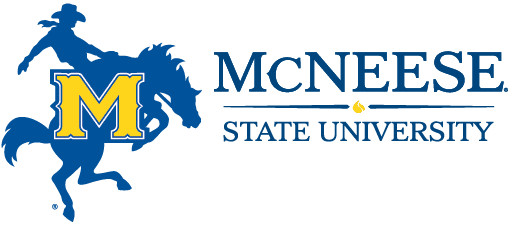History
McNeese State University was established by the Louisiana Legislature in 1939, with the opening fall session beginning on September 11, 1939. The institution was first named the Lake Charles Junior College and was a division of Louisiana State University. The following fall, the school changed its name to John McNeese Junior College to honor John McNeese, a renowned Southwest Louisiana educator and the first superintendent of schools in Imperial Calcasieu Parish. In 1950, McNeese became a four-year college in its own right and came under the authority of the Louisiana Board of Education. Finally, in 1970, McNeese State University became the official name of the school.
McNeese achieved Southern Association of Colleges and Schools Commission on Colleges accreditation in 1954 and maintains its regional accreditation status as a Level V institution authorized to award associate, baccalaureate, master’s, and doctoral degrees and undergraduate, post-baccalaureate, graduate, and post-master’s certificates. The University also provides opportunities for continuing education in support of its mission to value lifelong learning. As a member of the University of Louisiana System and a selective admissions institution, McNeese offers programs through the William J. Doré, Sr. School of Graduate Studies and six academic colleges: Agricultural Sciences; Business; Education; Liberal Arts; Nursing and Health Professions; and Science, Engineering, and Mathematics. McNeese’s student body is comprised of students from throughout Louisiana, the United States, and numerous countries. McNeese’s athletic programs are NCAA-certified for competition at the Division I and Football Championship level.
McNeese State University consists of 79 buildings over approximately 1,560 acres. The 121-acre main campus, dotted with live oak trees and azaleas, features approximately 51 buildings including the three original structures – Kaufman Hall, Ralph O. Ward Memorial Gym (the Arena), and Francis G. Bulber Auditorium. Bulber Auditorium, a striking example of Art Deco architecture, is listed on the National Register of Historic Places. The Southwest Louisiana Entrepreneurial and Economic Development (SEED) Center, which houses the Southwest Louisiana Chamber of Commerce, is an example of the many vital partnerships McNeese has established with the region’s businesses and industry. In addition, McNeese has three working farms and the Center for Advancement of Meat Processing and Production (CAMPP) to serve its agricultural sciences program.
The University motto of “Excellence with a Personal Touch” extends beyond the classroom. During World War II, the campus was the headquarters of the Louisiana Maneuvers, an extensive military exercise to prepare American soldiers for battle. In 1957, the McNeese community gave aid and comfort to the victims of Hurricane Audrey and served as the National Guard’s base of rescue operations. McNeese provided shelter for New Orleans residents and university students fleeing from Hurricane Katrina and then faced one of its greatest challenges when Hurricane Rita struck in the fall of 2005. The storm caused devastating damage to campus facilities and infrastructure. The recovery effort after Hurricane Rita demonstrated the resilience and commitment of the McNeese faculty, staff, and students to higher education.

